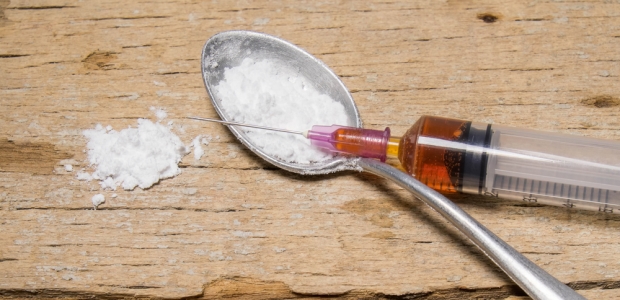
Alaskans' Heroin Use, Deaths Rising Fast
A bulletin issued July 14 by the Department of Health and Social Services says the inpatient hospitalization rate nearly doubled from 2008 to 2012, and deaths more than tripled from 2008 to 2013.
An Epidemiology Bulletin issued July 14 by the Alaska Department of Health and Social Services paints a sobering picture of the heroin problem in the state. It says the inpatient hospitalization rate coded for heroin poisoning nearly doubled from 2.4 per 10,000 population in 2008 to 4.7 per 10,000 population in 2012. Heroin-associated deaths more than tripled from 2008 to 2013.
SAMHSA estimates the annual average number of people in Alaska who used heroin in the past year quadrupled during 2002-2013, from fewer than 500 during 2002-2005 to approximately 2,000 during 2010-2013, according to the bulletin. During the same time periods, the estimated annual average number of persons in Alaska with heroin dependence or abuse doubled from fewer than 500 to approximately 1,000.
"The drastic increase in opioid pain reliever use over the past two decades has created 'opioid hunger,'" said Dr. Jay Butler, M.D., the department's chief medical officer. "Combined with the influx of cheap and available heroin, this has created a perfect storm of heroin addiction and deaths."
"To reverse these troubling trends, we need to effectively treat addiction as a chronic disease, increase the opportunities to provide life-saving reversal of heroin overdose using naloxone, and reduce addiction by preventing inappropriate prescriptions and diversions of opioid pain relievers," he added.
The bulletin cites statistics for 72 heroin-related deaths in Alaska. The decedents’ median age was 38, and most were aged 30-49 years. Fifty of them (69 percent) were white and seven were American Indian/Alaska Native. Fifty-two of them (72 percent) had at least 12 years of education.
The bulletin contains several recommends, including these:
1. Health care providers should endorse SAMHSA's evidence-based "Screening, Brief Intervention, and Referral to Treatment" (SBIRT) model to assist with assessing patients for risky substance use behaviors, engaging in communication, and providing treatment referral.
2. Health care providers should familiarize themselves with SAMHSA's Opioid Overdose Prevention Toolkit, which provides information on developing evidence-based policies and practices to prevent opioid overdoses.
3. Health care providers should facilitate appropriate access to naloxone.
4. Naloxone kits (either intranasal spray or injectable applications such as Evzio®) and training should be made available to law enforcement, corrections, probation officers, and to peoples who are frequently in close contact with heroin users.
5. Health care providers should endorse the use of evidence-based clinical guidelines for opioid pain relievers.
6. Health care providers should participate in the Alaska Prescription Drug Monitoring Program for monitoring Schedule II–V controlled substances. (All dispensers of controlled substances are required to participate in the Alaska Prescription Drug Monitoring Program.)
7. Educators should incorporate skills to prevent initial drug use and abuse into curricula throughout a student's career.